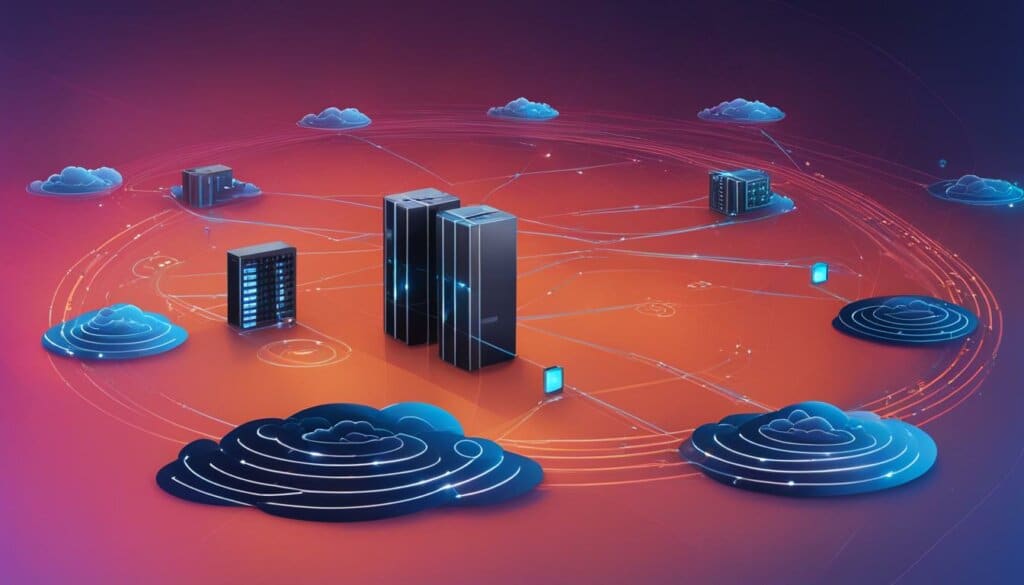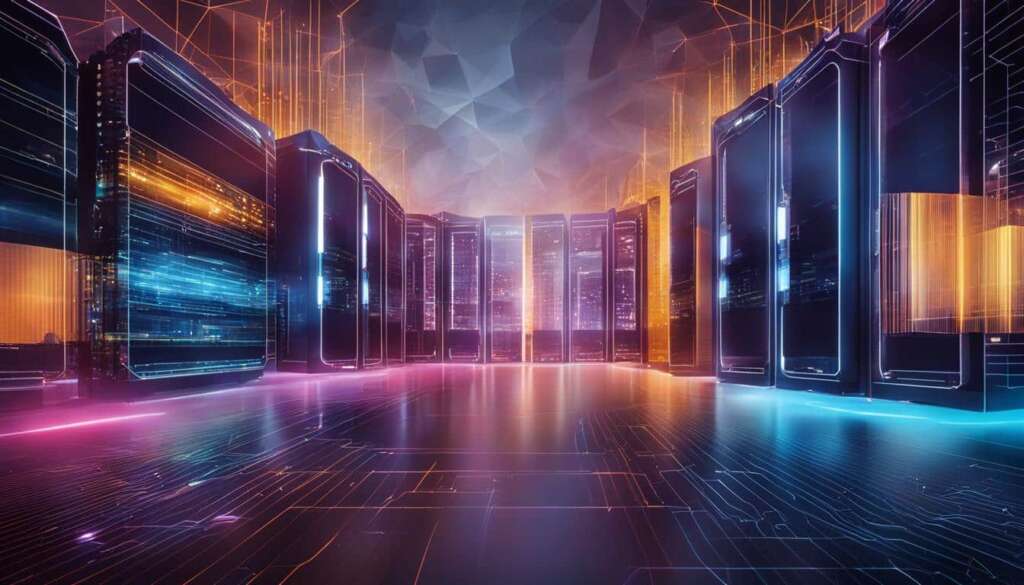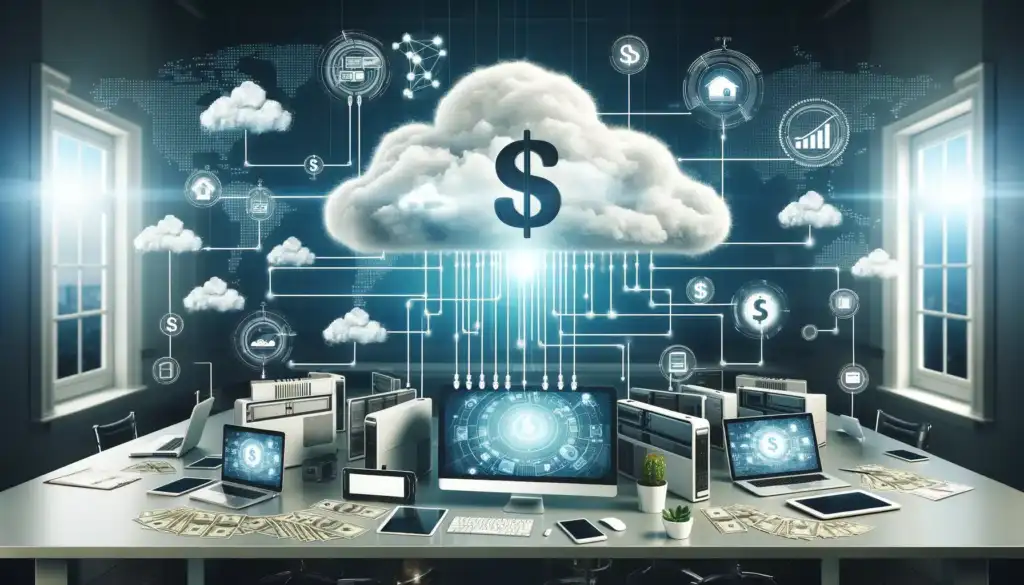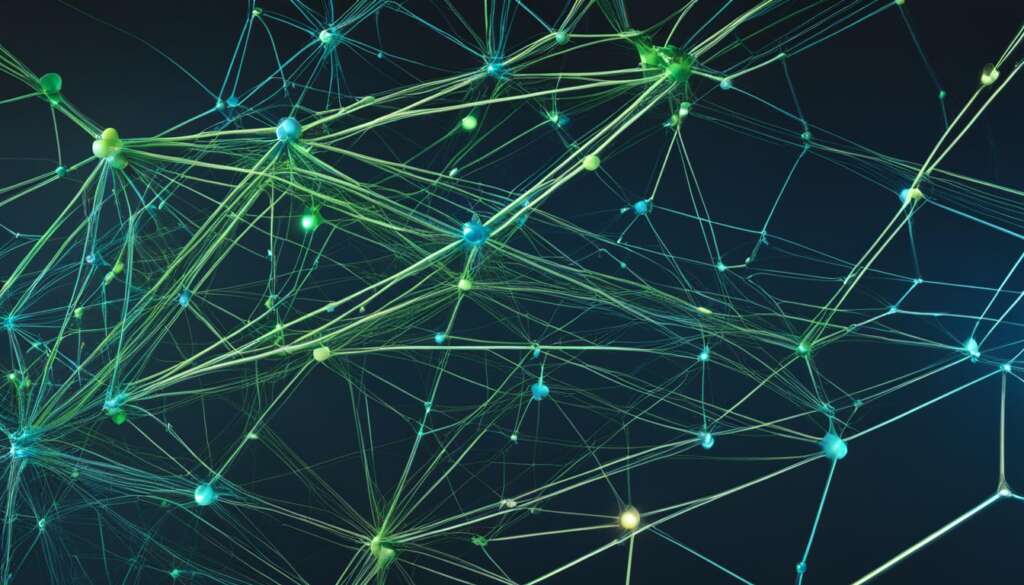Table of Contents
In today’s digital landscape, businesses are generating an unprecedented amount of data. This data is critical for decision-making and driving innovation. However, traditional approaches to data processing, such as relying solely on centralized data centers or the cloud, may not be sufficient to handle the vast volumes of real-time data generated by sensors and IoT devices.
This is where edge computing comes into play. Edge computing refers to a distributed IT architecture that brings computing resources closer to the data source, enabling real-time data processing, reducing latency, and improving efficiency.
By moving processing and storage resources closer to the source of data, edge computing allows businesses to analyze and act on data instantaneously. This eliminates the need to transmit raw data to a centrally located data center, resulting in faster response times and reduced bandwidth usage.
Edge computing has quickly gained prominence as organizations recognize its potential to enable real-time decision-making, enhance customer experiences, and drive operational efficiency. To fully understand the significance of edge computing, let’s delve deeper into how it works, its benefits, applications, and how it compares to cloud computing.
How Does Edge Computing Work?
Edge computing technology plays a crucial role in processing data efficiently and improving network performance. By moving storage and compute resources closer to the edge of the network, where data is generated, edge computing enhances response times, reduces bandwidth usage, and optimizes resource utilization. Let’s explore the architecture and principles behind edge computing.
Edge computing architecture involves deploying servers and storage units at the edge of the network, often in shielded enclosures to protect them from environmental conditions. This proximity to data sources allows for real-time data processing and analysis, eliminating the need to transmit raw data to a central data center for processing. By minimizing the distance between data source and processing, edge computing significantly reduces latency and optimizes network efficiency.
Instead of relying solely on centralized data centers or cloud computing, edge computing distributes data processing across various edge devices. These devices, such as routers, gateways, and IoT devices, have computing capabilities that enable local data processing. This distributed approach enhances data privacy and security while facilitating real-time decision-making at the network’s edge.
Edge computing is particularly beneficial in scenarios that require low latency, such as autonomous vehicles, industrial automation, or remote monitoring applications. By processing data on-site, edge computing minimizes the round-trip time needed to transmit data to a central data center, enabling faster response times. Additionally, edge computing can leverage machine learning algorithms and AI capabilities to analyze data locally, enabling real-time insights and autonomous decision-making.
The diagram below illustrates the working of edge computing architecture:
The image depicts how edge computing brings computing resources closer to the data source, enabling efficient data processing and minimizing latency.
| Key Components of Edge Computing Architecture | Benefits |
|---|---|
| Edge devices (e.g., routers, gateways, IoT devices) | – Faster response times – Reduced bandwidth usage – Improved network efficiency |
| Edge servers and storage units | – Real-time data processing – Local data analysis – Enhanced privacy and security |
| Shielded enclosures | – Protection from environmental conditions – Increased durability and reliability |
Edge computing architecture provides a resilient and efficient solution for managing data at the edge of the network. By leveraging edge computing technology, businesses can unlock the full potential of real-time data analytics, improve operational efficiency, and create innovative applications in various industries.
Benefits of Edge Computing
Edge computing offers numerous benefits for businesses. Some of the key advantages include:
- Reduced Latency: By processing data closer to the source, edge computing significantly reduces latency, enabling real-time decision-making and improving the overall user experience.
- Improved Efficiency: With edge computing, businesses can optimize the use of network resources and reduce the need for data transmission to centralized data centers or the cloud. This leads to improved efficiency and cost savings.
- Enhanced Security: Edge computing allows for data processing and storage at the edge of the network, minimizing the exposure of sensitive information to potential cyber threats. It provides greater control and security over data compared to relying solely on centralized data centers.
- Reliable Operation: Edge computing enables applications to continue functioning even in situations where there is limited or no connectivity to the cloud. This ensures uninterrupted operation and better resilience in critical environments.
- Bandwidth Optimization: By performing data processing at the edge, only relevant and summarized data needs to be transmitted to the cloud, reducing the amount of data that needs to be transferred and optimizing bandwidth usage.
- Scalability: Edge computing allows for the effortless scaling of resources based on demand. Additional edge devices can be easily deployed to handle increased data processing requirements.
,
.
,
.
,
.
,
.
,
- .
,
,
,
,
Edge Computing Applications
Edge computing has revolutionized the way businesses operate across various industries. Its ability to process data closer to the source enables real-time decision-making, reduces latency, and enhances operational efficiency. Let’s explore some notable examples of edge computing applications:
1. Autonomous Vehicles
Edge computing plays a crucial role in autonomous vehicles by enabling real-time data processing and analysis. Self-driving cars heavily rely on instantaneously analyzing vast volumes of sensor data to make split-second decisions, ensuring passenger safety and optimizing navigation routes.
2. Industrial Automation
In industries such as manufacturing and logistics, edge computing enables real-time monitoring and control of machines and processes. By processing data at the edge, industrial automation systems can quickly identify anomalies, predict maintenance needs, and optimize energy consumption, leading to improved efficiency and reduced downtime.
3. Smart Cities
Edge computing is instrumental in powering smart city initiatives. By processing data at the edge, cities can enhance public safety through real-time video analytics, optimize traffic flow through intelligent transportation systems, and manage resources more efficiently, such as street lighting and waste management.
4. Healthcare
In the healthcare industry, edge computing facilitates remote patient monitoring, real-time patient data analysis, and timely decision-making. It enables healthcare providers to deliver personalized care, improve patient outcomes, and enhance resource allocation in critical situations.
5. Retail
Edge computing plays a crucial role in the retail industry by enabling personalized customer experiences and improving inventory management. With real-time data analysis at the edge, retailers can offer targeted recommendations, streamline supply chain operations, and optimize the shopping experience.
6. Energy and Utilities
The energy and utilities sector benefits from edge computing by improving grid management, optimizing energy distribution, and integrating renewable energy sources. With real-time analytics at the edge, energy providers can optimize energy generation, reduce downtime, and proactively address grid disruptions.
These are just a few examples of the wide range of edge computing applications across industries. As organizations continue to harness the power of edge computing, we can expect to see further advancements and innovations that transform the way we live, work, and interact with technology.
Edge Computing vs. Cloud Computing
Edge computing and cloud computing are two distinct approaches to distributed computing. While they share some similarities, they serve different purposes and have unique characteristics. Understanding the differences between edge computing and cloud computing is essential for businesses to determine which approach is best suited for their specific needs.
Edge computing involves processing and analyzing data as close to the data source as possible. It aims to reduce latency, improve efficiency, and enable real-time decision-making by moving the computing resources closer to where data is generated. This approach is particularly useful in scenarios where low latency and real-time processing are crucial, such as autonomous vehicles, IoT devices, and industrial automation.
Cloud computing, on the other hand, relies on centralized data centers to process and store data. It involves accessing computing resources and services over a network, typically via the internet. Cloud computing offers scalability, flexibility, and cost-effective solutions for various applications, ranging from data storage and backup to software development and deployment.
One way to visualize the difference between edge computing and cloud computing is through the analogy of a city and a centralized data center. In a cloud computing model, the centralized data center acts as the city’s main hub, handling all the processing and storage. Data is sent to and from the central data center for analysis and storage. In contrast, edge computing involves establishing smaller processing hubs in different locations, resembling satellite towns surrounding the central city. Each edge computing node handles its processing and storage, minimizing the need for data to travel long distances.

| Edge Computing | Cloud Computing |
|---|---|
| Real-time processing | Scalability |
| Low latency | Flexibility |
| Decentralized architecture | Centralized architecture |
| Mobile and IoT applications | Enterprise applications |
| Bandwidth-saving | Cost-effective |
While edge computing and cloud computing have their advantages and use cases, they are not mutually exclusive. In fact, they can complement each other in a hybrid approach, known as edge-cloud computing. This model combines the benefits of both approaches, allowing businesses to leverage the scalability and flexibility of the cloud while taking advantage of the low latency and real-time processing capabilities of edge computing.
Ultimately, the choice between edge computing and cloud computing depends on the specific requirements of each application or use case. Businesses must analyze factors such as data volume, processing speed, latency sensitivity, cost considerations, and regulatory requirements to determine the optimal approach. As technology continues to advance, the synergies between edge computing and cloud computing will likely evolve, providing even more sophisticated solutions for the digital landscape.
Top 10 Best Edge Computing Practices to Follow in 2022
To effectively implement edge computing, organizations should follow best practices. Here are the top 10 practices to consider:
- Define clear objectives: Clearly define the goals and objectives of implementing edge computing within your organization. Identify the specific use cases and expected outcomes.
- Perform thorough feasibility analysis: Conduct a comprehensive analysis to determine the feasibility and potential benefits of deploying edge computing in your specific environment.
- Design a scalable architecture: Create an architecture that can scale to accommodate future growth and changing business requirements. Consider factors such as data volume, processing capabilities, and connectivity needs.
- Assess security risks: Evaluate potential security risks associated with edge computing and implement robust security measures to protect sensitive data and ensure regulatory compliance.
- Optimize network connectivity: Ensure a reliable and high-speed network connection between edge devices and the central infrastructure. Consider factors such as bandwidth, latency, and reliability.
- Implement edge analytics: Leverage edge analytics capabilities to process and analyze data at the edge, enabling real-time insights and faster decision-making.
- Implement edge caching: Use edge caching techniques to store frequently accessed data closer to the edge devices, reducing latency and improving performance.
- Monitor and manage edge devices: Implement robust monitoring and management systems to track the health, performance, and security of edge devices in real-time.
- Ensure data synchronization: Establish mechanisms to synchronize data between edge devices and the central infrastructure, ensuring consistency and data integrity.
- Continuously evaluate and optimize: Regularly assess the performance and effectiveness of your edge computing implementation, making necessary adjustments and optimizations to maximize its benefits.
Implementing these best practices will help organizations effectively deploy and harness the potential of edge computing. By following these guidelines, businesses can optimize performance, enhance security, and unlock the full potential of their edge computing infrastructure.
Edge Computing – A Transformative Technology for the Digital Era
Edge computing is a transformative technology that is reshaping IT and business computing. It enables businesses to process data closer to the source, reducing latency, improving efficiency, and enabling real-time decision-making. With its numerous advantages and wide range of applications, edge computing is becoming increasingly important in today’s tech-driven landscape. Organizations that embrace edge computing can gain a competitive advantage by harnessing the full potential of their data and delivering superior customer experiences.
By moving data processing closer to the source, edge computing minimizes the need for data to travel long distances to centralized data centers or the cloud. This significantly reduces latency, ensuring that critical information can be processed and acted upon in real-time. The ability to analyze data locally also enhances efficiency by reducing network traffic and dependency on external resources.
Furthermore, edge computing enables organizations to make informed and fast-paced decisions. Real-time data processing allows for immediate insights and actions, eliminating the delay associated with transmitting data to a centralized location for analysis.
The applications of edge computing are vast and varied. From autonomous vehicles and smart cities to industrial automation and remote healthcare, edge computing plays a pivotal role in supporting these cutting-edge technologies. By bringing computational power closer to the edge, organizations can achieve faster response times, lower costs, and enhanced security.
By embracing edge computing, businesses can take full advantage of their data and deliver superior customer experiences. Whether it’s personalizing recommendations for online shoppers or optimizing supply chain operations, edge computing enables organizations to provide real-time, context-aware services that meet the evolving needs of customers.

In the rapidly evolving digital era, edge computing is more than just a buzzword. It is a game-changer that empowers organizations to unlock the full potential of their data, drive innovation, and gain a competitive edge in the market.
Conclusion
Edge computing offers a distributed IT architecture that brings computing resources closer to the data source, enabling real-time processing, reduced latency, and improved efficiency. This transformative technology has diverse applications across industries, from retail and healthcare to manufacturing and transportation.
By following best practices and leveraging edge computing, organizations can unlock the full potential of their data and drive innovation in the digital era. Embracing edge computing is a strategic decision that can offer significant benefits and position businesses for success in the rapidly evolving tech landscape.
FAQ
What is edge computing?
Edge computing refers to a distributed IT architecture where data processing occurs at the edge of the network, as close to the data source as possible. It enables businesses to handle real-time data processing, reducing reliance on centralized data centers or the cloud.
How does edge computing work?
Edge computing works by moving a portion of storage and compute resources from the central data center to the edge of the network, where data is generated. This allows for faster response times, reduced bandwidth usage, and more efficient use of resources.
What are the benefits of edge computing?
Edge computing offers several benefits, including improved efficiency, reduced latency, real-time decision-making, enhanced data privacy and security, and lower network costs.
What are some examples of edge computing applications?
Edge computing has a wide range of applications, such as autonomous vehicles, smart cities, remote monitoring and maintenance, augmented reality, video surveillance, and predictive maintenance.
What is the difference between edge computing and cloud computing?
While both involve distributed computing, edge computing brings processing closer to the data source for real-time data analysis, whereas cloud computing relies on centralized data centers for data storage and analysis.
What are the best practices for implementing edge computing?
Some key best practices for implementing edge computing include ensuring data security, optimizing network infrastructure, leveraging edge-native applications, monitoring and managing edge devices, and considering power and environmental requirements.













